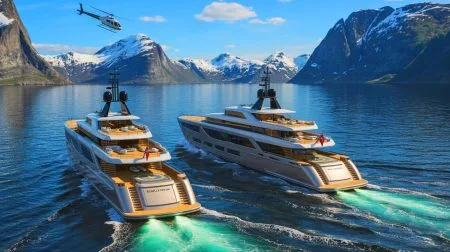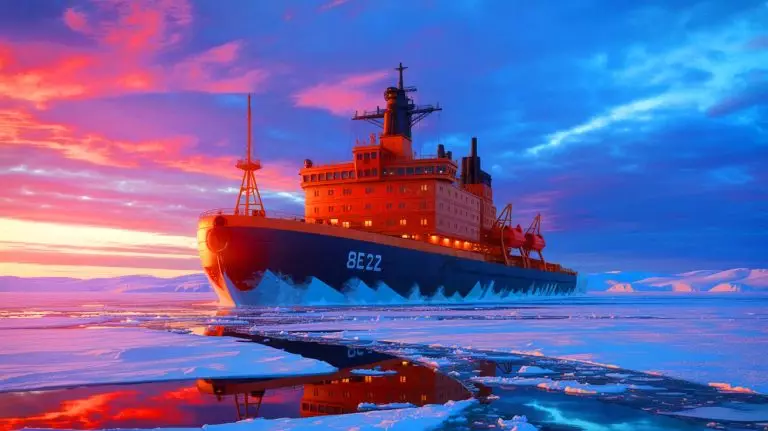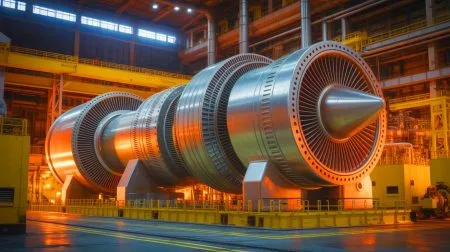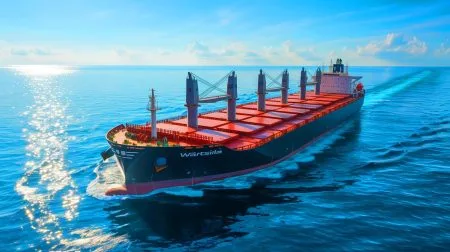| IN A NUTSHELL |
|
As global tensions rise and the Arctic becomes a focal point for geopolitical maneuvering, Russia is making substantial strides in expanding its nuclear-powered icebreaker fleet. The Northern Sea Route, a critical shipping lane that dramatically shortens the distance between Europe and Asia, is becoming increasingly accessible due to climate change. With the launch of eight new RITM-200 reactors, Russia is cementing its authority over this strategic passage. This article delves into the implications of Russia’s maritime ambitions and how they affect the international balance of power in the Arctic.
Russia’s Ambitious Expansion of Its Nuclear Icebreaker Fleet
The Russian state-owned corporation Rosatom has announced the assembly of eight new RITM-200 reactors, signifying an unprecedented expansion of its nuclear icebreaker fleet. Manufactured at the ZiO-Podolsk plant, these reactors are set to power the next generation of Russian icebreakers. The RITM-200 is already a proven technology, utilized in vessels like the Arktika, Sibir, and Ural. These icebreakers are pivotal in Russia’s strategy to develop the Northern Sea Route, a corridor that reduces shipping time between Northern Europe and Asia.
In 2024, the Northern Sea Route saw a record-breaking 37.9 million tons of freight transported across 92 voyages. This increase in traffic underscores the route’s growing importance in global trade. By enhancing its icebreaker fleet, Russia aims to dominate this shipping lane further, capitalizing on its strategic and economic potential. With climate change opening up new maritime pathways, the race is on to control these vital routes.
Rosatom’s Role in Nuclear Reactor Production
Rosatom is a global leader in nuclear reactor production, responsible for 40% of the world’s uranium enrichment capabilities. The Russian government has chosen Rosatom to manage the infrastructure of the Northern Sea Route. This decision aligns with Rosatom’s international expansion efforts, which include projects in Hungary and plans for an Arctic container ship launch in 2025. Maxim Tyukavkin, Rosatom’s Deputy Engineering Director, emphasizes the company’s commitment to mass-producing RITM-200 reactors, which are instrumental in advancing modular reactor technology.
Rosatom’s expertise in reactor manufacturing and operation positions it as a key player in the Arctic. The company’s ability to produce advanced reactors like the RITM-200 is crucial for maintaining Russia’s edge in the region. By investing in cutting-edge technology, Rosatom not only strengthens Russia’s hold over the Arctic but also sets a benchmark for nuclear innovation globally.
Technological Advancements in the RITM-200 Reactor
The RITM-200 reactor represents a significant technological leap over its Soviet-era predecessors. It is twice as light, 1.5 times more powerful, and occupies 1.5 times less space. Rosatom oversees the entire production chain, from design to installation, with Afrikantov OKBM JSC responsible for equipment design and ZiO-Podolsk JSC handling manufacturing. These reactors are used not only in icebreakers but also in floating power plants and small modular reactors (SMR) for isolated regions.
Rosatom’s innovations extend beyond maritime applications. The company is constructing floating power plants to supply electricity to industries in Chukotka and a land-based nuclear plant in Yakutia. Internationally, Russia has agreed with Uzbekistan to build an SMR with six similar reactors. These advancements underscore Russia’s commitment to leveraging nuclear technology for strategic and economic gains.
The Future: RITM-400 and Beyond
Rosatom is also developing an enhanced version of its reactor, the RITM-400, which promises increased thermal power. Currently, the RITM-200 offers a thermal output of 175 MW, with the land-based RITM-200N variant reaching 190 MW of thermal and 55 MW of electrical power. This evolution highlights Rosatom’s dedication to advancing nuclear technology for diverse applications.
Russia’s dominance in large-scale icebreakers is unmatched, with the largest fleet globally and the only nuclear-powered icebreakers. This superiority enables Russia to effectively control the Northern Sea Route, a critical asset for both economic and strategic reasons. With countries like China, the U.S., and Canada also expressing interest in Arctic development, the competition for control of this vital maritime route is intensifying.
The Arctic is rapidly becoming a hub of international interest, with countries vying for influence over its valuable resources and strategic routes. Russia’s aggressive expansion of its nuclear icebreaker fleet positions it as a formidable player in this arena. As the Arctic opens up, the question remains: how will other nations respond to Russia’s growing dominance in this crucial region?
Did you like it? 4.4/5 (28)








Wow, I didn’t know Russia had such advanced icebreakers! 🚢
How does the RITM-200 compare to American nuclear technology?
Does this mean shipping costs between Europe and Asia will decrease?
I’m skeptical about the real threat level. Are we overreacting?
It’s intriguing how climate change is opening up new trade routes.
Are there any international regulations governing these icebreakers?
Russia’s strategy seems smart—control the routes, control the trade. 💼
Will other countries like the US or China start building nuclear icebreakers too?
Thanks for sharing such a comprehensive analysis!
Is there a risk of nuclear accidents with these icebreakers?
Who knew icebreakers could be so high-tech and powerful? 🚀
What about the indigenous communities in the Arctic? How are they affected?
Rosatom’s expansion is impressive but also slightly concerning.
Can someone explain how these reactors work? I’m curious! 🔧
This article reads like a spy thriller—so much intrigue in the Arctic.
Did anyone else find the hyperlink about Russia equipping jets with nukes alarming?
How reliable are these RITM-200 reactors? Any past failures?
Are there any plans for the US to respond to this Arctic expansion?
Looks like a new Cold War is brewing, but in the Arctic! 🥶
Thanks for the insights on Rosatom’s international projects. Very eye-opening!
What is Rosatom’s track record on safety and environmental protection?
Is this really a threat to global trade, or just more political hype?
Is there a possibility of an international conflict over these routes?
Russia’s icebreakers are cool, but can they really change global power dynamics?
Impressive technology, but why isn’t anyone talking about the environmental risks? 🌍
How do these icebreakers affect the wildlife in the Arctic region?
Can someone translate the potential economic impact into numbers?
Great article! I learned a lot about nuclear icebreakers today. 😊
How is the rest of the world reacting to Russia’s Arctic ambitions?
It’s amazing how technology is reshaping geopolitical landscapes.
Will this lead to a new arms race in the Arctic? 🏁
Can other countries build similar icebreakers to compete with Russia?
Thank you for the detailed information on Rosatom’s role. It’s fascinating!
Why is the Arctic so important anyway? 🤔
Great article, but I wish there were more details about the environmental impact.